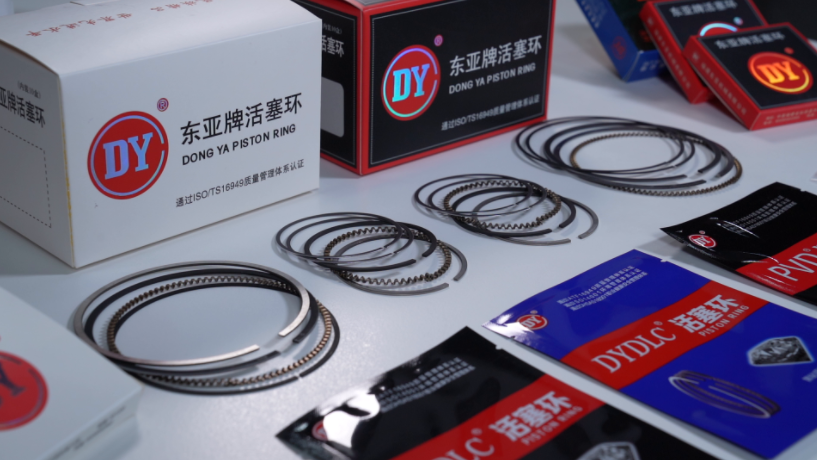Engine Piston Rings Explained
Jun. 21, 2024
What are engine piston rings?
Piston rings serve two primary purposes: they separate the combustion chamber from the crankcase, and they regulate the amount of lubricating oil between the cylinder liner and piston.
Why do we need piston rings?
Piston rings play a crucial role in maintaining a seal between the combustion space and the crankcase. While the combustion space features fixed cylinder walls and a stationary upper wall, there's no fixed lower wall. To create a moving seal in this setup, piston rings are employed.
These rings are affixed to the piston within recessed grooves, and a thin layer of oil fills the space between the rings and the cylinder liner (with no direct contact between the rings and the liner). Thanks to this oil film and the precise clearances between the rings and the liner, the rings can uphold a tight seal while moving linearly up and down within the cylinder.

Types of Piston Rings
Piston rings are categorized into two main types:
Suggested reading:Essential Guide to BMW E90 Rear Coil Spring Replacement
Benefits of Using an Electric Scroll Compressor in HVAC Systems
Key Factors in Choosing the Right Truck Clutch
How Will China Influence Global Truck Parts Standards?
What Are the Best Truck Tires for Your Needs?
Are Eco Oil Filters Worth the Investment for Your Vehicle's Health?
What Are the Common Challenges with Electric Scroll Compressors?
1. Compression Rings
Compression rings create the seal between the crankcase and the combustion space. Positioned closest to the combustion space, they must endure substantial pressure and temperature fluctuations.
2. Scraper Rings
Scraper rings control the amount of lubricating oil between the piston rings and the cylinder liner. Situated below the compression rings and farther from the combustion space, they are not subjected to the same extent of pressure and temperature variations as compression rings.
Engine Piston Ring Configurations
Most four stroke engines utilize three piston rings (two compressions and one scraper) whilst most two stroke engines utilize only two piston rings (one compression and one scraper).
Piston Ring Failure
Piston ring failure or improper lubrication can result in a phenomenon known as "blow-by," where gases escape from the combustion space into the crankcase. This occurrence is undesirable as it reduces engine efficiency by lowering the maximum peak pressure attained during the power stroke. Moreover, blow-by exposes gases in the crankcase to elevated temperatures and possibly higher pressures, increasing the risk of a crankcase explosion. Such explosions pose a significant threat, particularly for large two-stroke marine engines.
Suggested reading:Understanding Long Haul Tires: Key Features and Benefits
Choosing the Right Engine Air Filter for Your Needs
Maximize Efficiency with Electric Scroll Compressors Today
Transform Your Workflow: Solve DFAC Liner Kit Challenges with Ease!
10 Leading Shock Absorber Manufacturers You Should Know About
Top 7 Position Sensor Suppliers You Need to Know in 2023
Are You Overpaying for Tyres? Discover Hidden Costs Today!
454
0
0
None
None
Related Articles
-
390
0
0
-
Essential Guide to Truck Brake Discs: Types, Benefits, and Maintenance Tips
When it comes to truck safety, one cannot underestimate the crucial role of braking systems
242
0
0
-
366
0
0
-
7 Top Truck Lamp Manufacturers You Should Know About
When it comes to enhancing safety and visibility on the road, quality truck lamps are indispensable
168
0
0
-
Ride Smoothly: Finding the Right Electric Bicycle Tires Manufacturer to Eliminate Common Pain Points
126
0
0
-
174
0
0
-
201
0
0
-
151
0
0


Comments
All Comments (0)